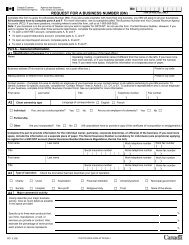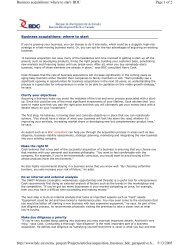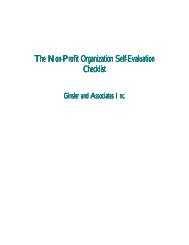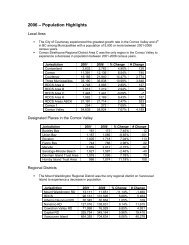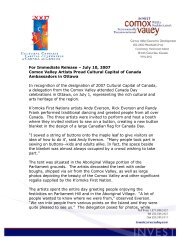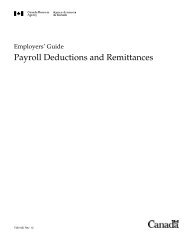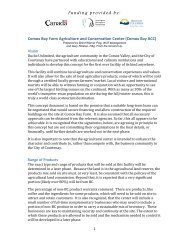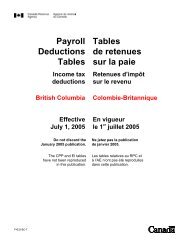qprev_HBB Manual 2.qxd - Small Business BC
qprev_HBB Manual 2.qxd - Small Business BC
qprev_HBB Manual 2.qxd - Small Business BC
Create successful ePaper yourself
Turn your PDF publications into a flip-book with our unique Google optimized e-Paper software.
payment (usually a minimum of three monthsafter an accident)• how long payments continue.record won’t be destroyed. Send a copy of visualand inventory records to your insurance agent forfiling with your policy.Partnership InsuranceWhether a partnership is formal or informal, onepartner is liable for the actions of another partner.If you have business partners, research optionsfor insurance to protect you against suits arisingfrom an action on the part of other partners. Thisinsurance is expensive and not that common insmall and home-based partnerships.Product or Service InsuranceYou can buy insurance to protect you againstclaims, injuries, or damages that occur inconnection with your product or service. This isusually expensive. If something about yourproduct or service makes you think you shouldhave this kind of insurance, tell your agent.When Filing an Insurance ClaimAccurate records of inventory, businessequipment, and supplies are necessary asproof of value of loss or damage on anyclaim against insurance. Keep:• receipts of all purchases• an inventory of things in each room in whichyou perform any business activity• a visual record, using a still camera orvideo camera.For insurance claim purposes, receipts plus apicture is the best record. Consider storing therecord of your insured possessions or a copyin a safe place somewhere other than in yourhouse. This way, if there is an accident yourArrange Your Financial RecordsYou are legally required to keep these records.You need them. Financial records tell an owner/operator how efficiently a business is being run,and where changes may be needed to cut costs,maintain quality, or increase return.A small business needs to keep track of thefollowing:• total income and total expenses• all money owing to the business – accountsreceivable• all money owed by the business – purchasesand expenses, accounts payable• petty cash and bank deposits• journal and general ledger• each customer’s account (if credit is given)• equipment and depreciation allowance• inventory• payroll record if a business has employees.Money Coming InA summary of sales and cash should always becurrent, using these categories:• cash receipts, including sales, collections, andmiscellaneous income• cash on hand, money on the premises, cheques,and petty cash• total sales, cash and credit.The Accounts Receivable file is the business filein which to put accounts owing money (thosepaying in instalments, or at the end of 30 days).solutions for small business home-based business 67



